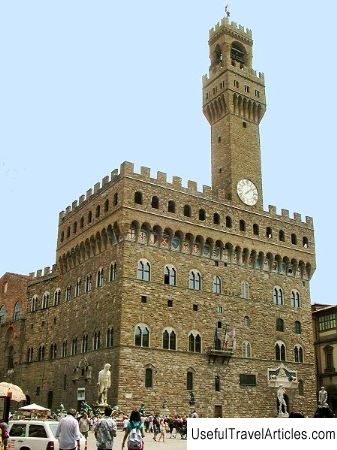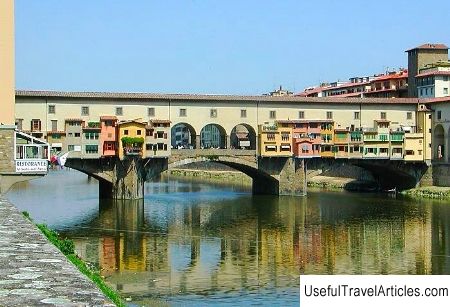Palazzo Vecchio description and photos - Italy: Florence
Rating: 8,1/10 (270 votes) 
Palazzo Vecchio description and photos - Italy: Florence. Detailed information about the attraction. Description, photographs and a map showing the nearest significant objects. The title in English is Palazzo Vecchio. Photo and descriptionPalazzo Vecchio (Old Palace) is located in one of the most beautiful squares in Italy - Piazza della Signoria. The construction of the Palace began in 1294 according to the design of Arnolfo di Cambio as a fortress to protect the residence of the priori - a powerful square building with a jagged end. The high tower (94 meters), which has risen above the gallery since 1310, makes the palace even more solid. Outside, the building is faced with hard stone rustication. The three-storey facade is decorated with twin windows inscribed in semicircular arches, which gives the whole building an impression of restrained austerity. Between 1343 and 1592, changes and additions were made to the original design of Arnolfo di Cambio (both inside the building and outside). Masters such as Kronaka, Vasari and Buontalenti took part in these works. On the facade, under the arches of the gallery, one can see frescoes with nine coats of arms of the city's communes. The watch has a mechanism that dates back to 1667. On both sides of the entrance to the palace there are marble sculptures for hanging chains. In front of the Palazzo Vecchio there are a number of sculptures, including the famous copy of David by Michelangelo, replacing the original in 1873. Above the facade, above the entrance, there is a medallion with the monogram of Christ, flanked by figures of lions against a bright blue background of the tympanum and topped with a triangular cornice. The Latin inscription `` Rex regum et Dominus dominantium '', which means `` The king rules, and God rules, '' was placed here in 1551 by the decree of Cosimo I. Salon of the five hundred Palazzo Vecchio, intended for holding meetings of the Grand People's Council after the second expulsion of the Medici from Florence, was created by the architect Kronak. Vasari headed the decoration of the hall. Allegorical paintings on the ceiling and walls tell about the triumphant Return of the Grand Duke Cosimo I to Florence, about the History of the conquests of Pisa and Siena. Among the marble statues, Michelangelo's sculptural group The Genius Trampling on Brute Force should be noted. Among the Supreme Apartments, apart from the apartments of Eleonora Toledskaya and the Audiences Hall, the Hall of Lilies should be noted. The hall owes its name to the decoration depicting a golden lily flower on a blue background. On the walls - frescoes by Domenico Ghirlandaio. & Nbsp; The famous Judith, Donatello's masterpiece, is on display in the Hall of Lilies. It used to stand in Piazza della Signoria.       We also recommend reading Church of St. Nicholas the Wonderworker description and photos - Russia - Siberia: Novosibirsk Topic: Palazzo Vecchio description and photos - Italy: Florence. |




